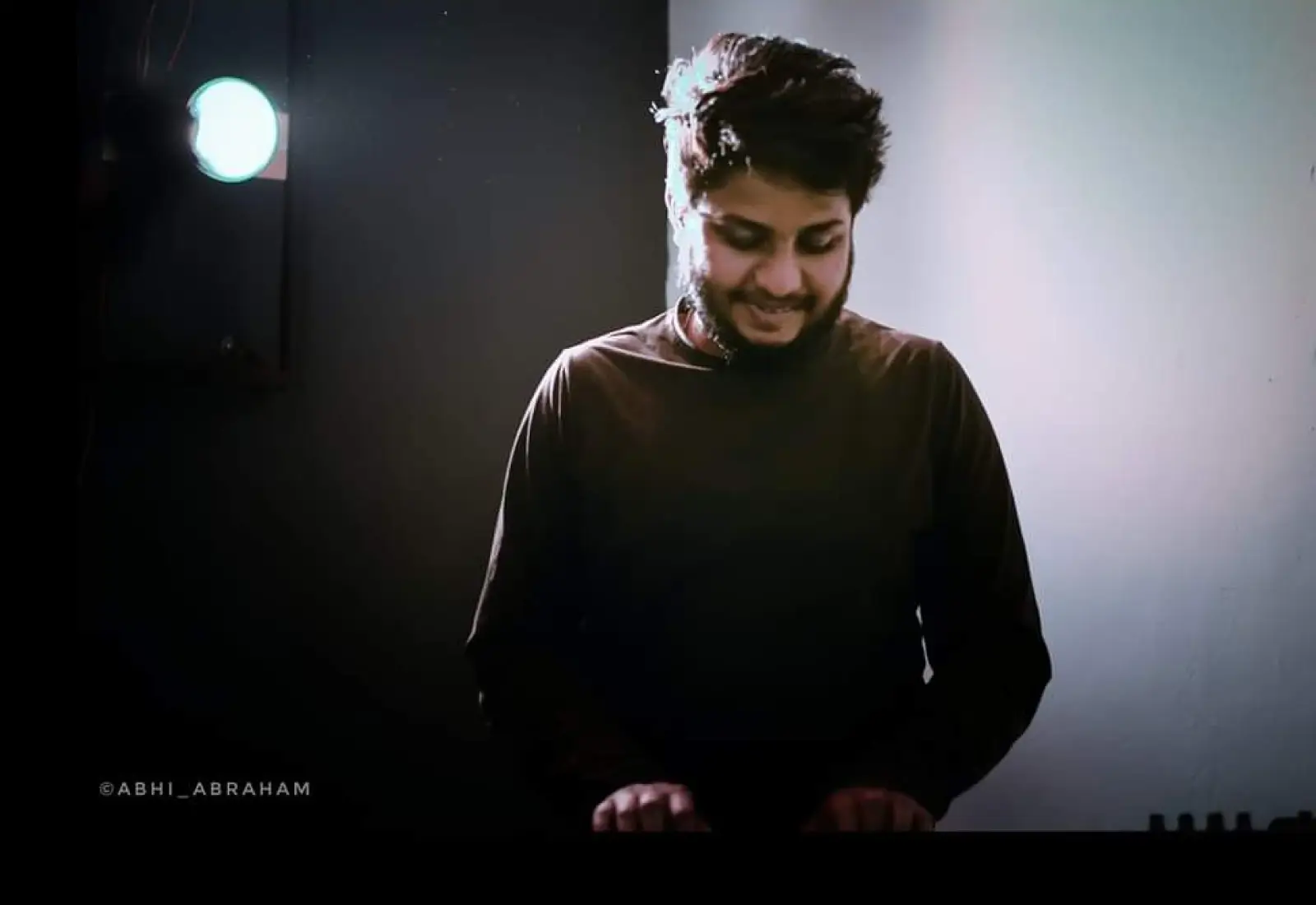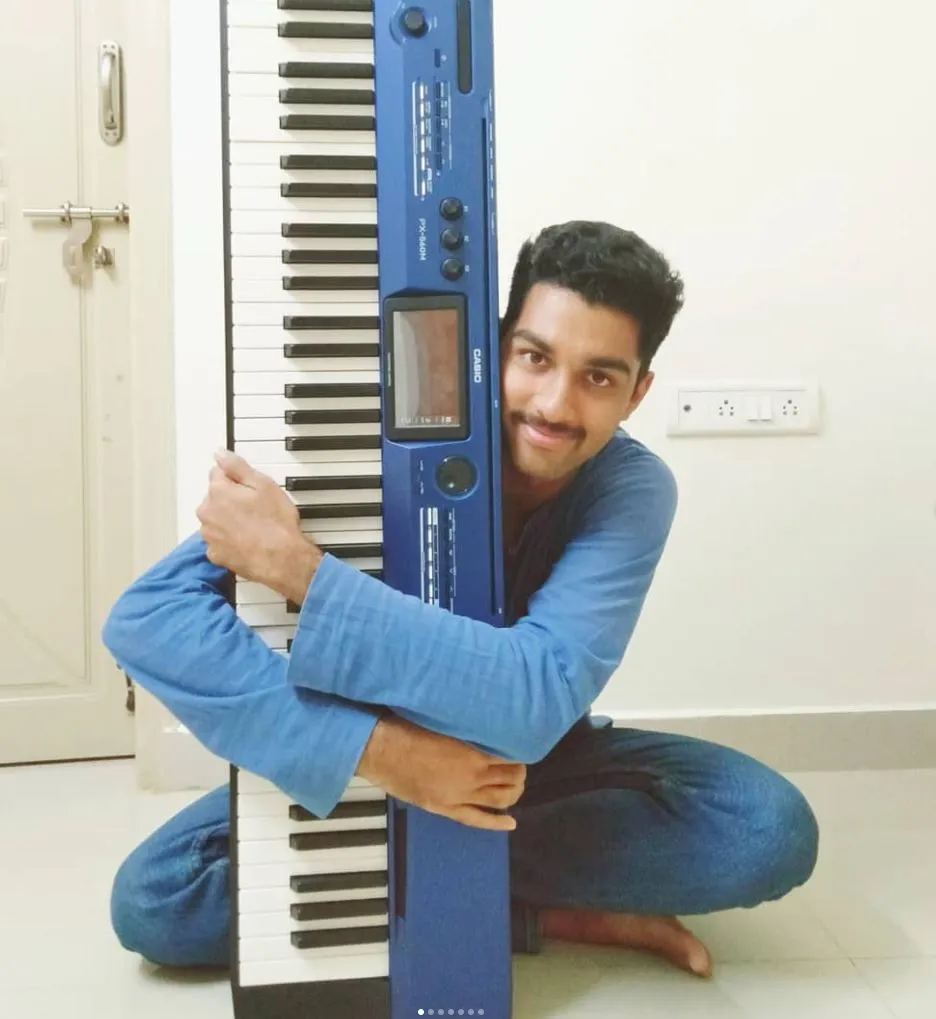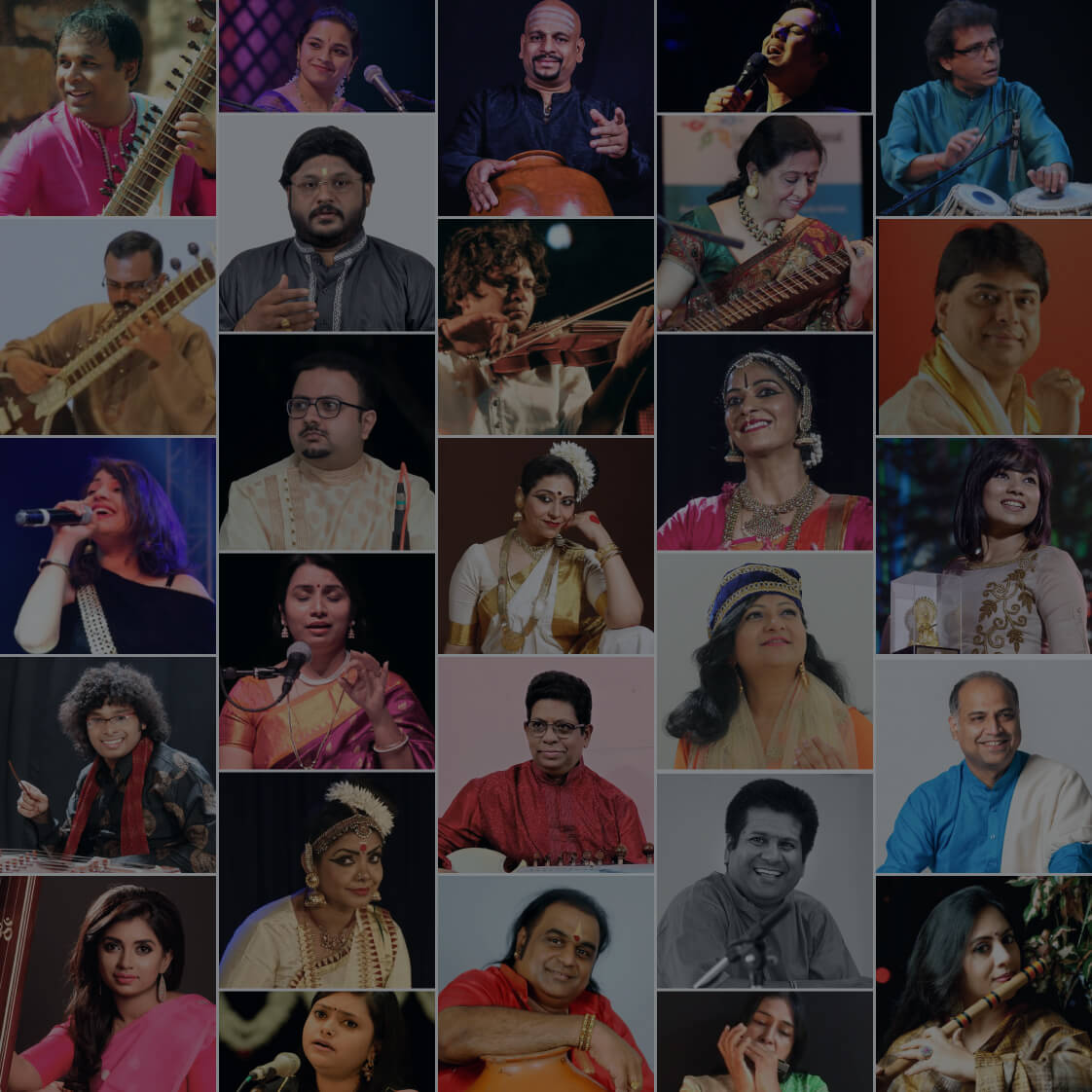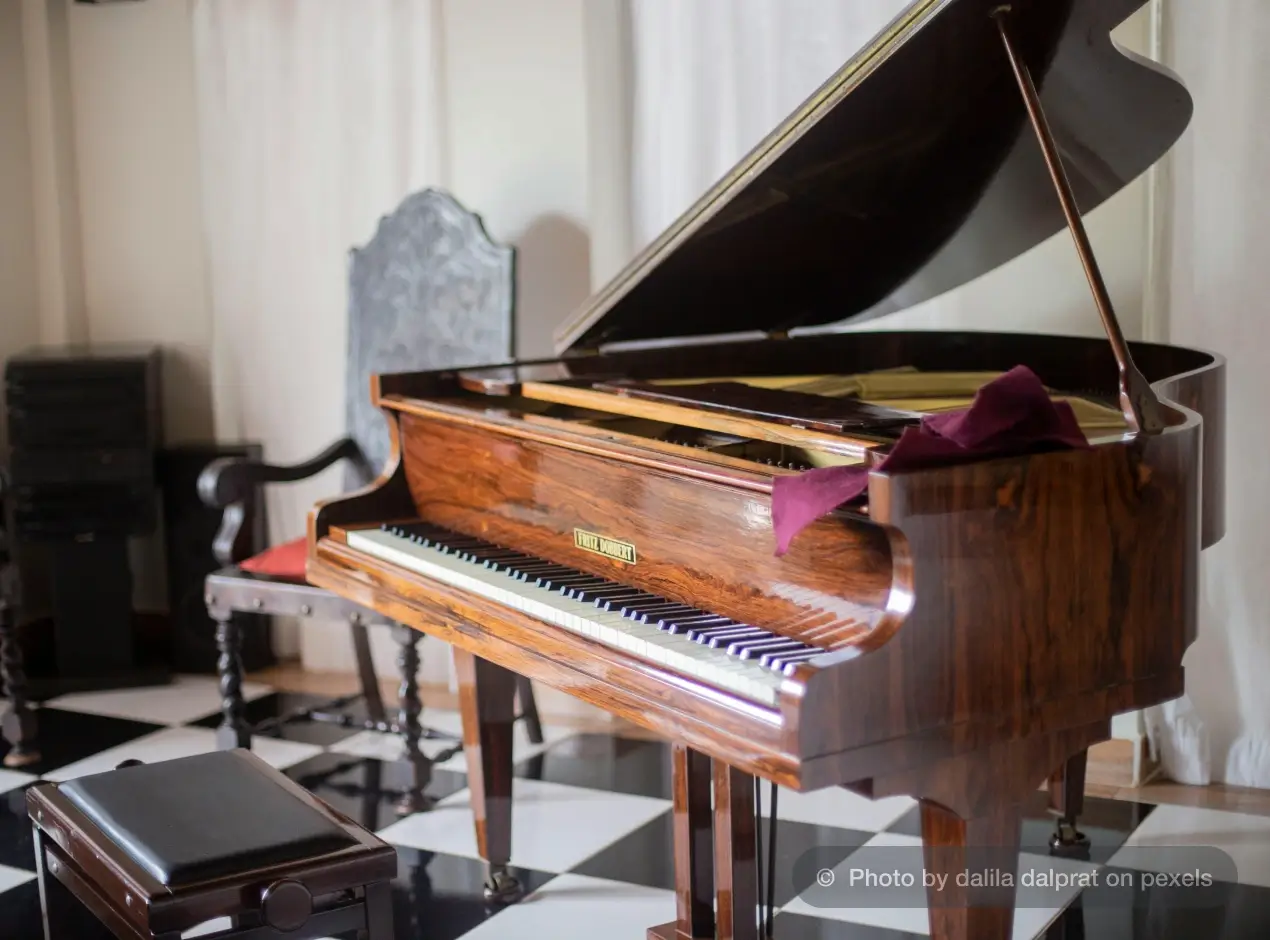Musical Organ Overview
The musical organ is a keyboard instrument that is used in large spaces like a chapel or a concert hall. It is huge in size and has several parts that create sound at varied volume and intensity to fill the large space in absence of a soundbox.
Musical organs produce sound in different ways. Some organs use pipes to make sound, while others use wood, wind, or electricity. A traditional organ has multiple keyboards, a pedalboard, pipes, and registers. All these parts play their roles to produce deep, and rich sounds.
Going through the different parts and their functionalities of an organ, it can be said that the organ is many musical instruments rolled into one. As a result, over the years, several other musical instruments have come out including piano, harmonium, harmonica and many more. Each of these instruments have developed specializing on one functionality of the huge ensemble that we know as an organ.
Organs have been used in music for hundreds of years, the most traditional type being the pipe organ. Many famous composers, like Johann Sebastian Bach, wrote music specially for the organ. Even today, the organ remains an important instrument in many different kinds of music.
History and Evolution
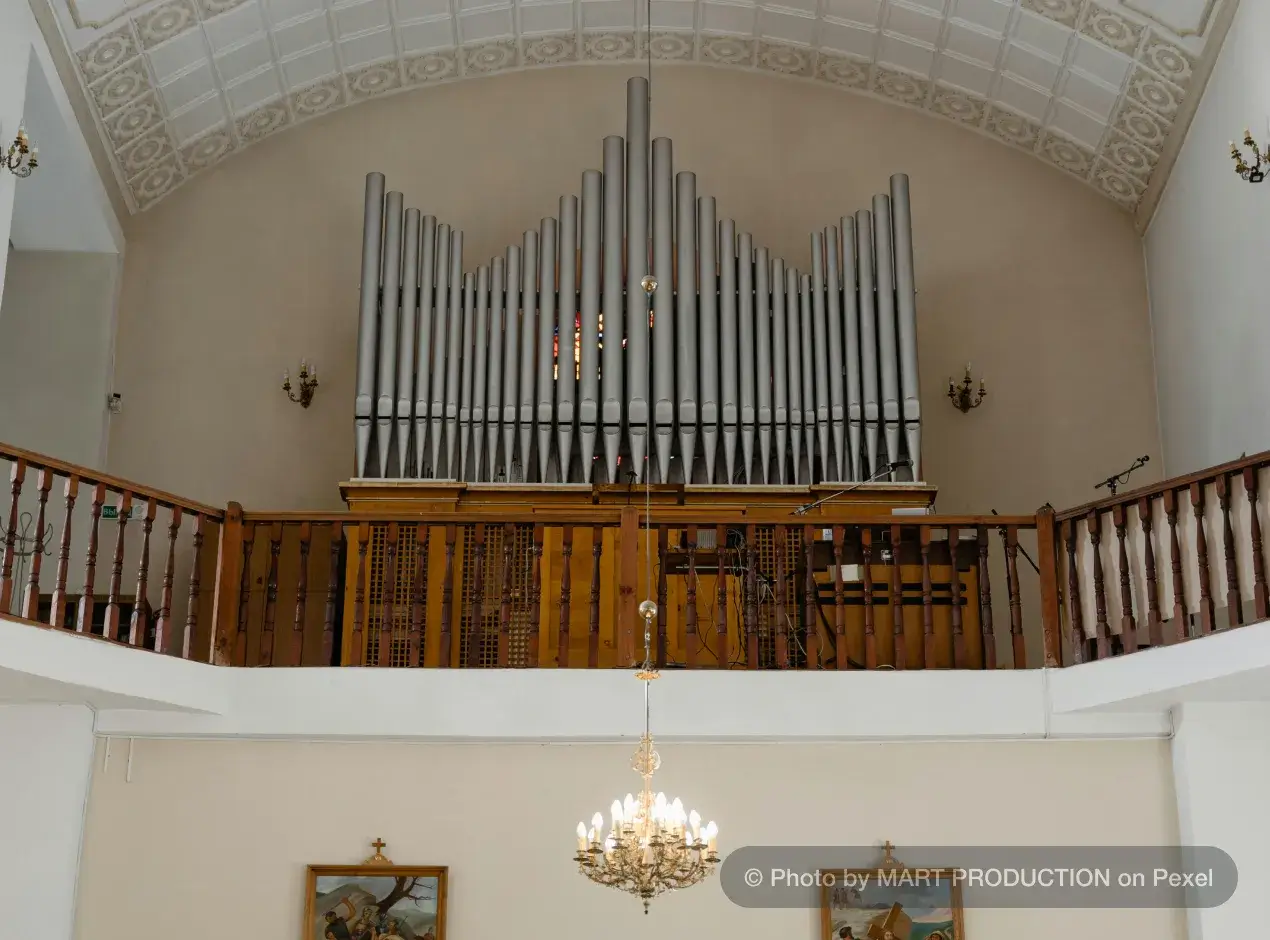 The musical organ has a long and rich history, tracing back to ancient civilizations. The first known organ-like instrument was the Hydraulis, invented by Ctesibius of Alexandria between 285 and 222 BC. This early instrument used water pressure to control airflow and produce sound. It gained popularity in Ancient Greece and Rome, where it was played during games, races, and other public events.
The musical organ has a long and rich history, tracing back to ancient civilizations. The first known organ-like instrument was the Hydraulis, invented by Ctesibius of Alexandria between 285 and 222 BC. This early instrument used water pressure to control airflow and produce sound. It gained popularity in Ancient Greece and Rome, where it was played during games, races, and other public events.
During the early medieval period, the organ spread from the Byzantine Empire to Western Europe. In Byzantium, it was used in both imperial court music and secular performances. Over time, it became an essential part of Christian church services, especially in the Catholic Church. Later, the organ was also used in concert settings beyond religious ceremonies.
Several early organs were developed over the centuries. The Hydraulis, created in the 3rd century BC, was a Greek organ powered by water pressure and played using valves. By the 1st century AD, the Ptera or Pteron, an instrument used in ancient Rome, resembled small medieval portative organs.
In the 2nd century AD, the Magrepha, a Hebrew instrument with ten pipes, was played using a keyboard. In 757, Emperor Constantine V of Byzantium introduced the organ to the Carolingian Empire by sending an organ as a gift to the West. During the 9th century, the Banū Mūsā brothers created an early automatic organ, possibly powered by water.
The medieval period (8th to 14th Century) saw further advancements in organ design. Pipe organs with hand-pumped bellows were introduced into churches. The Portative Organ was a small, portable instrument commonly used in medieval music, while the Positive Organ was a larger, transportable instrument often found in churches and homes.
The Regal, a late-medieval organ, featured reed pipes and bellows, influencing the later development of the harmonium and reed organ. As the organ continued to evolve, it became a central instrument in church music, classical compositions, and concert performances. Today, it remains one of the most powerful and versatile musical instruments in the world.
Over time, it developed from simple wind instruments into the grand and complex instruments we see today. Before the invention of the pipe organ, there were panpipes, also known as the pan flute, syrinx, or nai, are considered early ancestors of the pipe organ.
Types of Musical Organ
1. The Pipe Organ
The pipe organ is the oldest and largest type, traditionally found in churches, cathedrals, and concert halls. It produces sound by forcing air through pipes of different lengths and materials. The size and material of the pipes affect how each note sounds. Pipe organs are often used in church services, classical concerts, and special ceremonies.
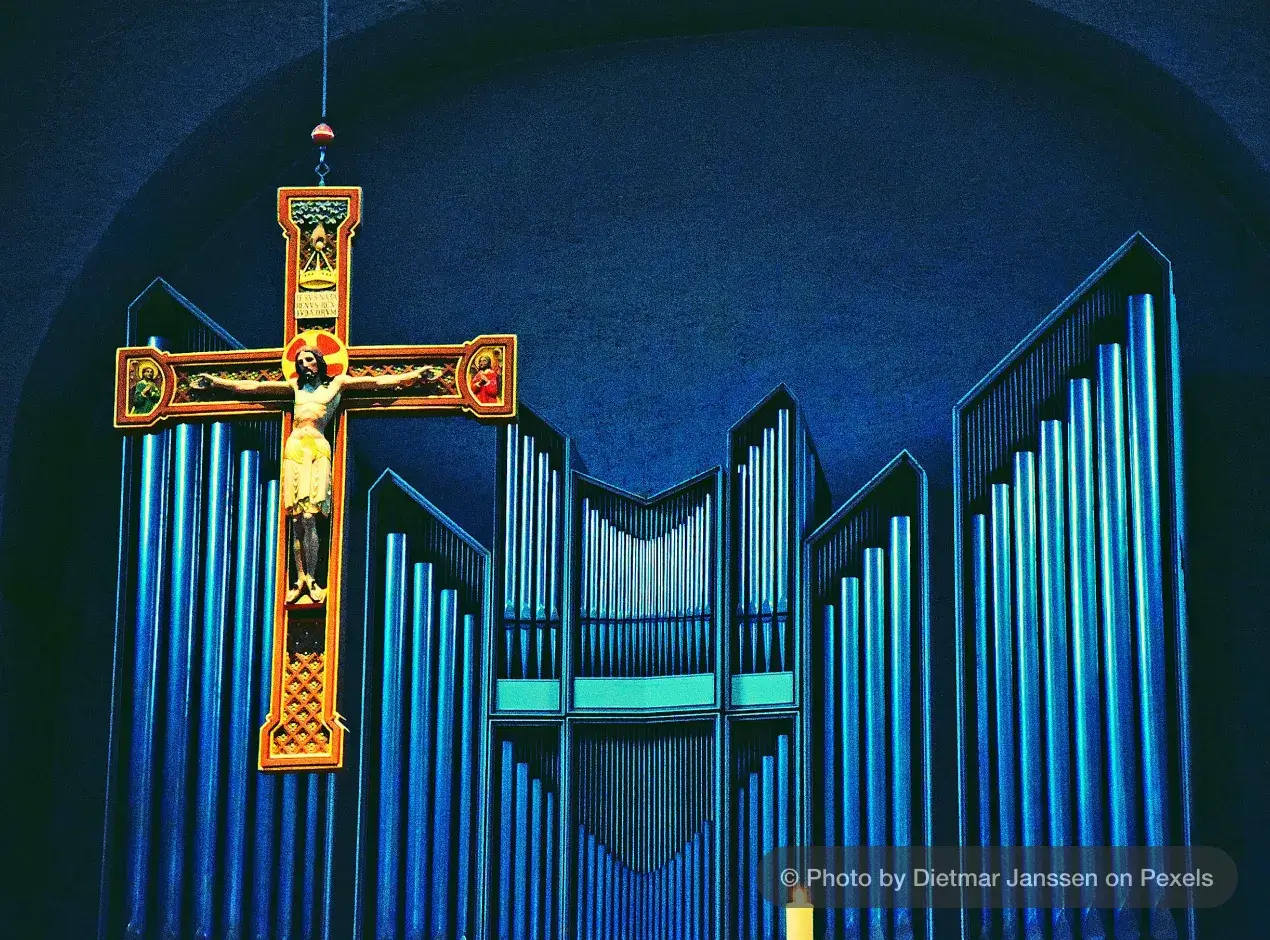
The organist controls the instrument using multiple manuals (keyboards), a pedalboard, stops, and wind systems. Some pipe organs, like the Benjamin Newton Duke Memorial Organ, have thousands of pipes, multiple manuals, and different tone-producing divisions. The history of the pipe organ dates back to ancient Greece (3rd century BCE), evolving through the medieval, Baroque, and modern periods, incorporating mechanical and electronic enhancements.
2. The Electronic Organ
The electronic organ emerged as a more portable and cost-effective alternative to the pipe organ. Instead of using air-driven pipes, it produces sound through electronic oscillators and digital sound synthesis. It became popular in churches, homes, and music bands. Modern electronic organs use digital sampling to imitate real organ tones and include various features such as effects, amplifiers, and MIDI integration.
3. The Hammond Organ
Invented by Laurens Hammond in 1935, the Hammond organ is an electromechanical instrument that uses tonewheels and electromagnetic pickups to generate sound. It is famous for its rich, warm tones and dynamic drawbars, which allow musicians to shape the sound. The Hammond organ became iconic in jazz, gospel, blues, and rock music, with legendary musicians like Jimmy Smith, Deep Purple, and The Doors popularizing its distinctive sound. The Leslie speaker, often used with the Hammond organ, adds a swirling, vibrato-like effect, making it a versatile and expressive instrument.
4. The Reed Organ (Harmonium)
 The reed organ, also known as the pump organ or harmonium, produces sound using air-driven free reeds. It is typically smaller and does not require electricity, relying on hand or foot-operated bellows. Reed organs were popular in churches, schools, and homes during the 19th and early 20th centuries. Today, the harmonium remains an essential instrument in Indian classical music, devotional singing, and folk traditions.
The reed organ, also known as the pump organ or harmonium, produces sound using air-driven free reeds. It is typically smaller and does not require electricity, relying on hand or foot-operated bellows. Reed organs were popular in churches, schools, and homes during the 19th and early 20th centuries. Today, the harmonium remains an essential instrument in Indian classical music, devotional singing, and folk traditions.
Parts of Musical Organ
A musical organ is a complex instrument with many different parts working together to create sound. The most important parts include the manuals (keyboards), pedalboard, pipes, stops, wind system, and console. Each of these parts has a special role in producing the rich and powerful sound of the organ.
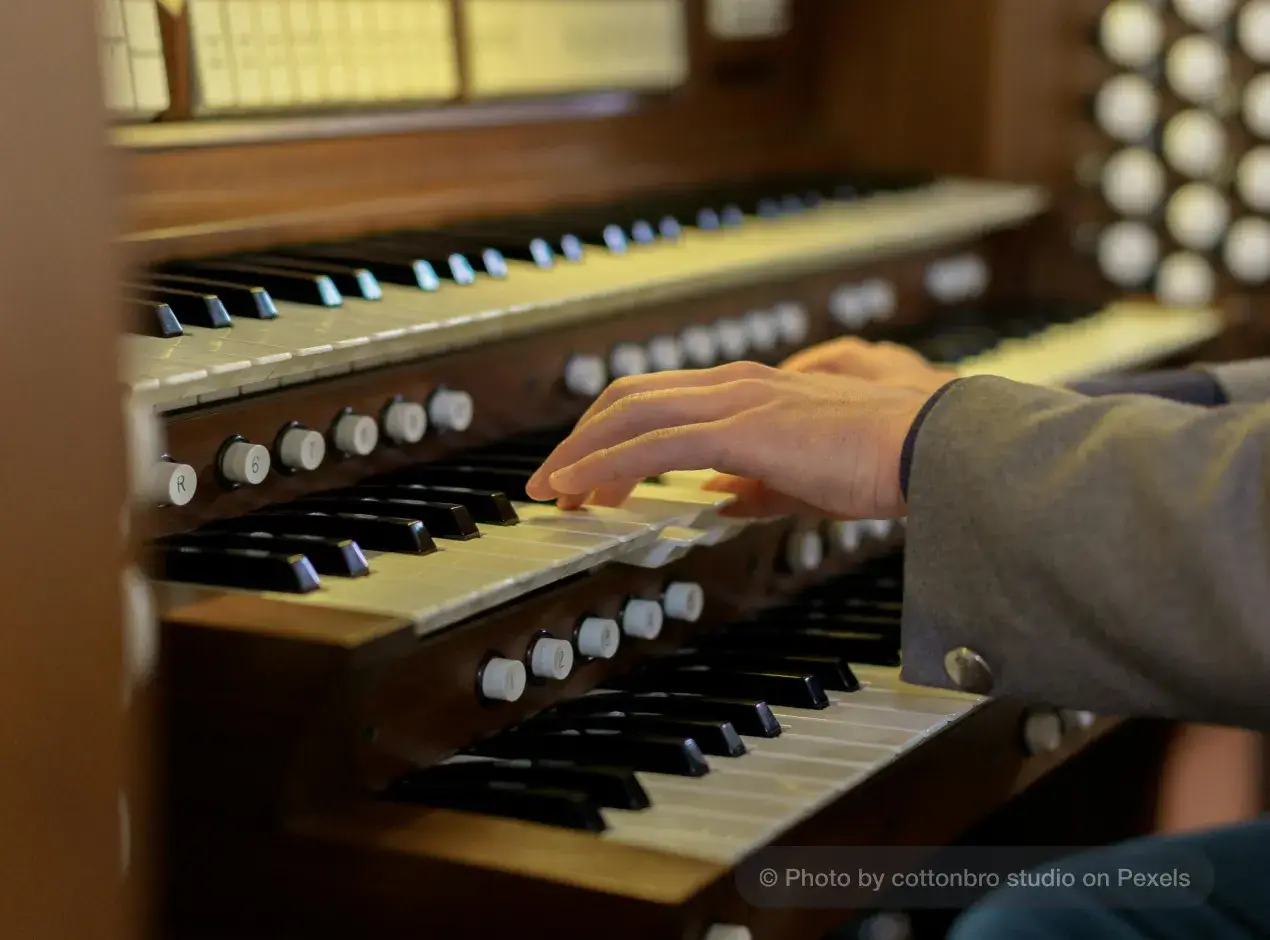
Manuals
The manuals, or keyboards, are where the organist plays the music with their hands. Most organs have two or three manuals, but some larger ones can have four or even five. Each manual controls a different set of pipes, allowing the organist to create different sounds by switching between them or playing them together. Unlike a piano, the keys of an organ do not respond to touch pressure. Instead, the volume and tone are controlled by stops and other mechanisms.
Pedalboard
The pedalboard is a set of large keys played with the feet. It is located below the manuals and is an important part of the organ, especially in church music. The pedalboard allows the organist to play deep, low notes that add richness and power to the music. Some organs have a simple pedalboard with only a few keys, while larger organs have a full set of pedals covering a wide range of notes.
Pipes
The pipes act as the voice of the organ. These pipes create sound when air passes through them. They come in different shapes and sizes, each producing a unique tone. Large pipes create deep, low sounds, while smaller pipes make high, sharp tones. The pipes are made of metal or wood, and they are arranged in groups called ranks. Each rank has a set of pipes that produce the same type of sound. The number of pipes in an organ can vary from a few hundred to thousands, depending on the size of the instrument.
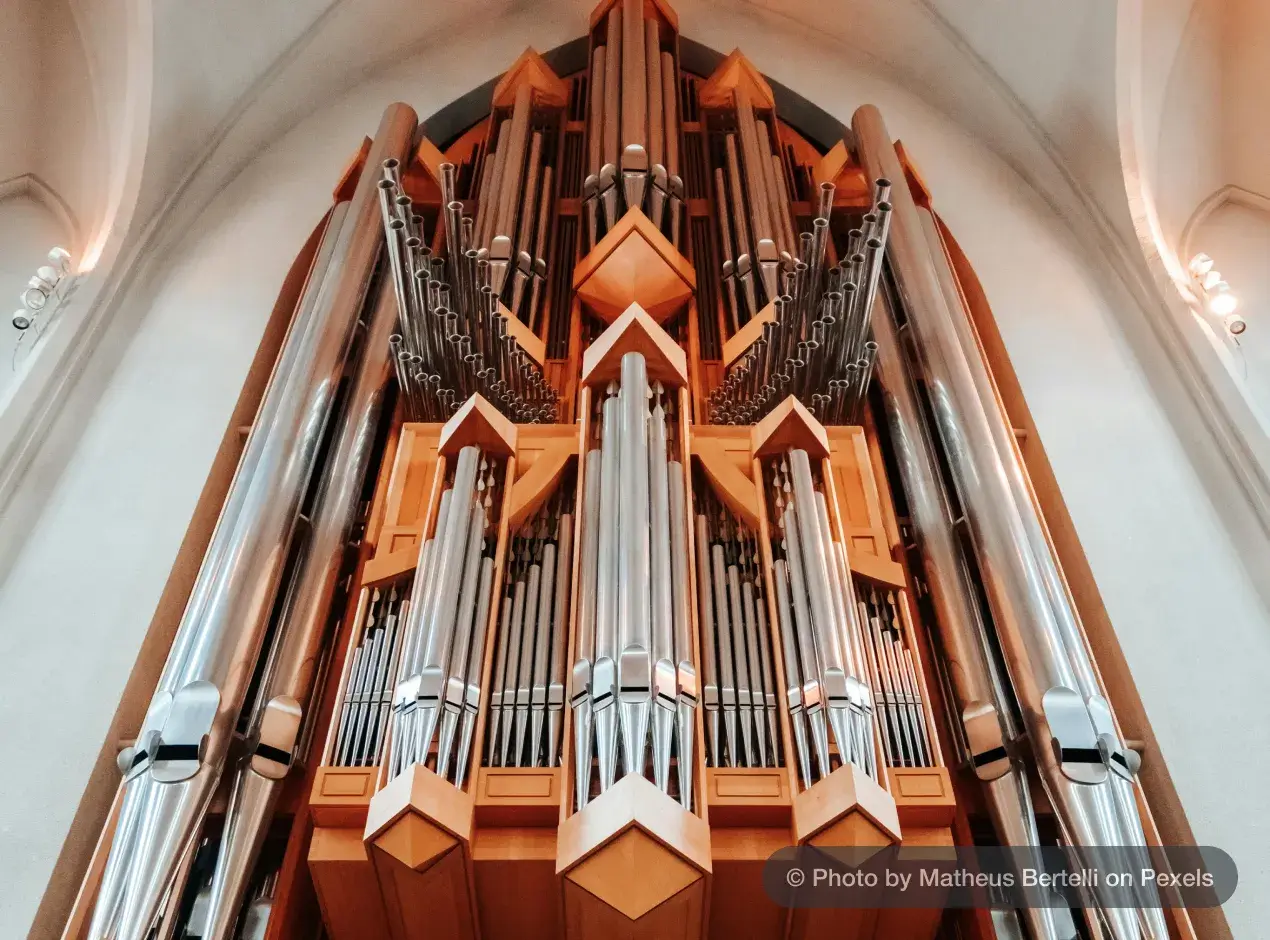
Stops
The stops are controls that allow the organist to change the sound of the organ. Pulling or pressing a stop activates a specific set of pipes, while turning it off stops the air from reaching those pipes. Stops help create different effects, such as flute-like tones, trumpet sounds, or deep, rumbling bass notes. By combining multiple stops, the organist can produce a rich and complex musical experience.
Air Supply
At the heart of the pipe organ's sound production is its air supply system. Traditionally, large bellows, operated manually or mechanically, pumped air into reservoirs to maintain consistent pressure. In modern organs, electric blowers have replaced manual bellows, providing a steady and reliable airflow. This pressurized air, often referred to as "wind," is essential for the pipes to produce sound.
Windchests
The windchest acts as the distribution center for the pressurized air. Positioned beneath the organ pipes, it stores the wind and directs it to the appropriate pipes when activated. Each windchest contains channels corresponding to each note and ranks for different stops.
Key Action
The key action is the system that connects the organist's touch on the keyboard to the opening of valves beneath the pipes. When a key is pressed, it controls a valve that allows air to flow into the corresponding pipe, producing sound. There are different types of key actions:
- Mechanical (Tracker) Action: This traditional system uses levers and trackers (thin wooden or metal strips) to create a direct mechanical link between the keys and the valves. This method offers precise control and a natural touch but can be physically demanding, especially in large organs.
- Pneumatic Action: This system uses air pressure changes in lead tubes to operate the valves. When a key is pressed, the air pressure in the corresponding tube changes, activating a pneumatic motor that opens the valve. It reduces effort for the organist but may introduce a slight delay in sound response.
- Electro-Pneumatic Action: A combination of electrical signals and pneumatic mechanisms, this system uses an electromagnet to activate the pneumatic motor, which then opens the valve. This allows for more flexible console placement and a lighter touch, making it easier to play.
Console
The console is the main control center of the organ. It includes the manuals, pedalboard, stops, and other controls that allow the organist to play and adjust the sound. Some consoles also have buttons or levers called couplers, which allow the organist to connect different manuals and make the sound fuller. On modern organs, the console may have digital features that allow for programmed settings, making it easier to switch between different sounds.
All these parts work together to make the organ one of the most powerful and expressive musical instruments. Whether in a church, concert hall, or theater, the organ’s complex system allows it to produce a wide range of sounds, from soft, delicate notes to grand, thunderous tones that fill an entire space.
Famous Musical Organ Players
Johann Sebastian Bach
Franz Liszt,
Jimmy McGriff,
Billy Preston,
Garth Hudson,





